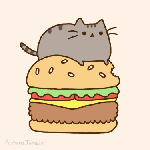-
Posts
554 -
Joined
-
Last visited
Content Type
News Articles
Tutorials
Forums
Downloads
Posts posted by ent
-
-
Hello everyone!I'd like to introduce a Jedi Academy trick jumping movie: Popusa 3D. Enjoy watching.Torrent 3D: http://db.tt/coDwK7RHDirect link 3D: http://download.maverickservers.com/popusa_3d.mp4Torrent 2D: http://db.tt/258Ud7kpDirect link 2D: http://download.maverickservers.com/popusa_2d.mp43D is a side-by-side stereopair. To watch 3D you need to get 3D video player (for example, Stereoscopic Player) and 3D device (for example, anaglyph glasses).Models: http://db.tt/45Obm3vt
Astral Serpent, Omicron, therfiles and 3 others like this




ent - Popusa 3D
in Art, Media & Technology
Posted
Added link to models in the 1st post.